Top 5 ways QR code sign-in systems can support your business right now
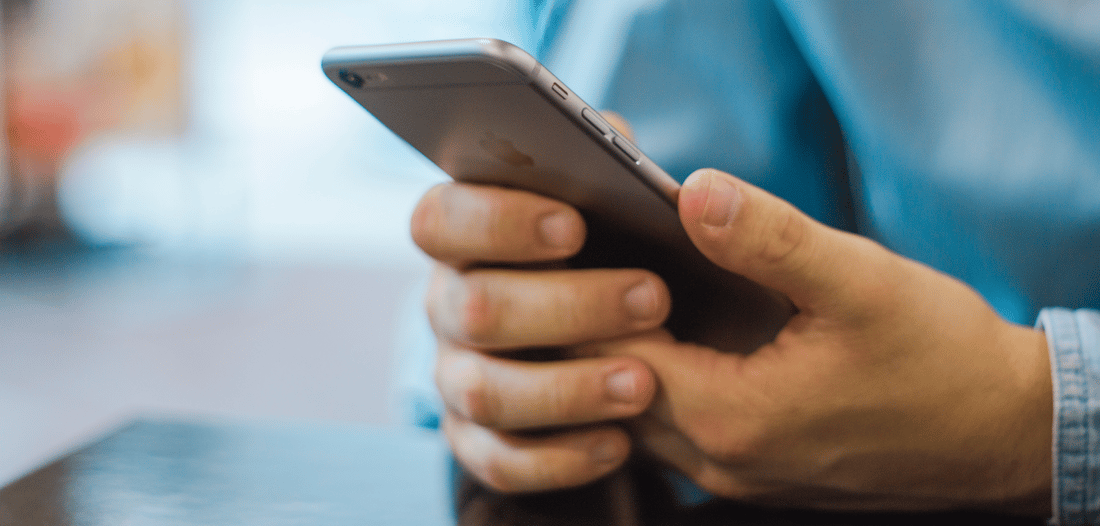
The employee or visitor experience when entering a business establishment can make or break a deal.
A lengthy line in the lobby that delays a meeting, an overly complicated sign-in process, wasted time wandering around a lobby, being forced to come in close contact with others in crowded reception areas...all of these problems can inconvenience or even put a person at risk upon arrival.
Problems at check-in can occur regardless of a company’s size or industry - but a well-constructed QR code sign-in system designed to manage all people flows in a given workplace can eliminate them, all while boosting efficiency and creating a memorable experience.
And in today’s world of work, a dynamic people flow management system is even more important for keeping visitors and employees safe and healthy, minimizing risks of transmission, and keeping up robust security measures on the premises - all while ensuring data privacy.
But let’s start with the basics.
What is a QR code sign-in system?
A QR code sign-in system, also called a visitor management system (VMS) or people flow management system, is a digital solution that allows visitors and employees to enter and exit workplaces safely and efficiently.
Before arriving at an office or facility, visitors or contractors (if they meet all pre-screening health and safety criteria) are sent a unique QR code directly via email. They can scan this QR code (without the need to touch anything) at doorways, turnstiles, and front desk iPads.
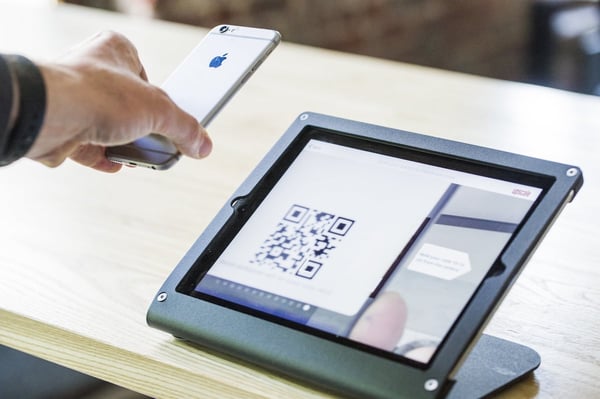
And as the employee is, in a sense, the new 'visitor' in this pandemic era, they also need a safe, efficient, touchless way to enter and exit their buildings as organizations return to workplaces. With the right QR code check-in app, they can simply scan their mobile devices upon entry and complete a similar, streamlined contactless check-in process.
But beyond allowing for smooth, safe check-ins, these systems can provide a suite of other features that help organizations:
- meet changing health and safety regulations,
- strengthen site security,
- facilitate audits and regulatory compliance,
- secure any personal data, if it needs to be stored at all, and,
- free up staff’s time (and lower costs).
Here's what to know.
Top benefits of QR code sign-in systems
Here are 5 ways implementing a QR code sign-in system can support and sustain your company, and facilitate smooth people flows, during COVID-19 and beyond.
1. Send invitations to pre-screen and pre-register employees and visitors.
Sending a welcome message is a great way to give visitors a warm introduction even before they arrive on the premises. Administrators can invite guests with an invitation email that includes a customizable message welcoming them to their meeting.
Amidst the pandemic, the pre-registration process may also include a risk assessment questionnaire to ask visitors questions in compliance with health regulations. Admins can also digitally send health and safety policies (i.e. mandatory mask-wearing, social distancing, the process for temperature checks at reception, etc.).
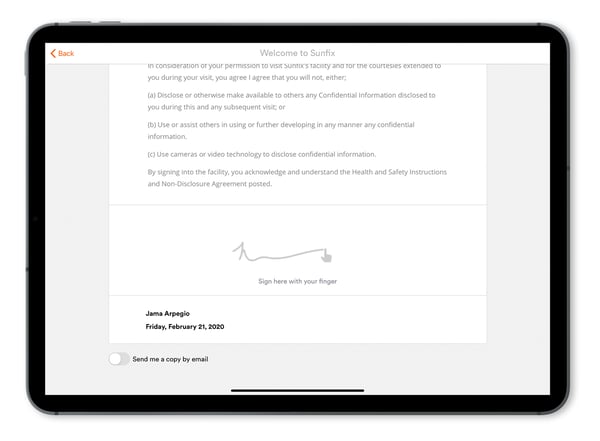 Employees, too, can complete a similar pre-registration and screening process, and be reminded of company health and safety protocols before they arrive at the office.
Employees, too, can complete a similar pre-registration and screening process, and be reminded of company health and safety protocols before they arrive at the office.
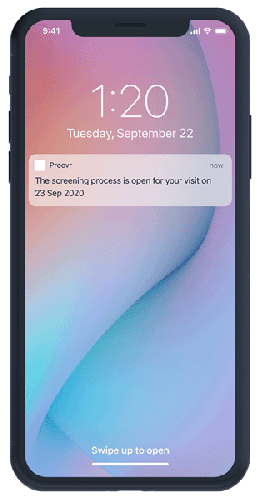
If they meet all pre-registration criteria, employees, contractors, and visitors will be able to check-in via a unique QR code straight from their mobile devices. If not, the right check-in system will ensure that these individuals are not granted access to the premises.
2. Go contactless for COVID-19 safety.
In addition to limiting building access to employees and visitors who have been pre-screened for wellness, a touchless QR code check-in can prevent crowding in the lobby, ensuring an efficient flow of pre-approved guests.
Staying distant and efficient
Enabling a touchless check-in via employee and visitor smartphones eliminates long lines at check-in, and protects security personnel, front-desk receptionists, and fellow employees and visitors from having to be in close proximity to one another.
(With systems like Proxyclick, employees can also check themselves in without QR codes once they're in a set distance of the workplace, using GPS data on their phones. No location data is stored.)
In addition, digital sign-in systems also offer building occupancy features, allowing admin to keep the number of people in a building at or under their specified occupancy limits. This further allows for health and safety measures like social distancing to be met.
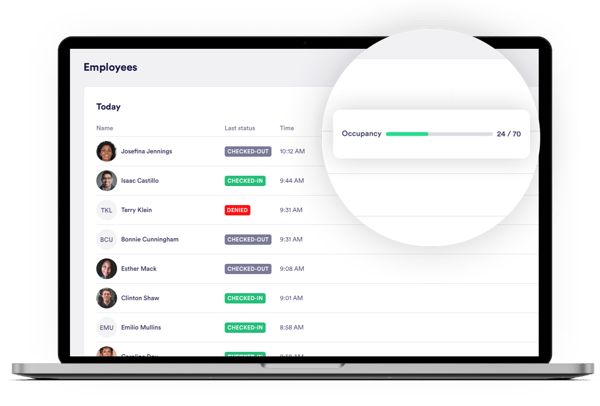
Avoiding touching of common surfaces
In addition, scanning QR codes directly from personal devices at entry points eliminates touching of shared surfaces, such as tablets or log-books; with access control system integrations, it may also enable employees and visitors to avoid touching turnstiles, door handles, and elevator buttons as they proceed to their appointments.
Contact tracing
In the event that an individual is shown to have been infected with COVID-19 in the days after a meeting, contact details and meeting information (date, time, location) can be used to quickly notify anyone who may have been exposed.
3. Enhance your building’s security protocols.
A well-designed people flow management system can serve as the first line of physical security for your workplace, staff, and data. Systems may include security features such as integrations with global watchlists and facial recognition capabilities for verifying ID documentation.
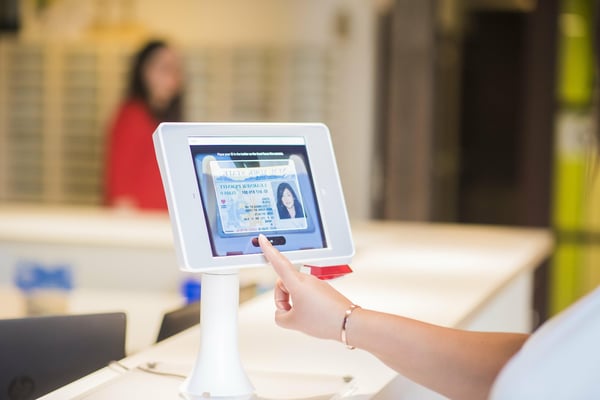
Assigning each person a unique QR code is invaluable in ensuring that only those who are permitted access to the building can enter, swipe or scan through turnstiles and into elevators, and gain access to employees’ offices. This is increasingly relevant during the pandemic when considering the health risk posed by unexpected visitors.
Streamlining front desk procedures with the help of a check-in app allows security staff to immediately identify any visitors who are in the wrong place, or more significantly, who may represent a threat to the company or employees - and escort out any intruders discreetly, without creating significant disruptions.
4. Ensure all data is securely stored (if stored at all).
The cost of implementing a QR code sign-in system is infinitesimal compared to the costs that non-compliance with data privacy regulations can impose on a company.
During the pandemic, the needs for safeguarding data have become even more complex: Questionnaires about health, wellness, and recent contacts may be necessary to facilitate a safe working environment, but storing and securing users’ answers must be done in accordance with data privacy regulations.
Using the right digital sign-in system will ensure that employee and visitor data will be stored securely, and that sensitive information required is limited to only what is needed.
Sign-in systems like Proxyclick, for example, allow for data to be automatically deleted after a specified number of days, to help organizations comply with data privacy laws.

(For more information, check out our guides to GDPR and regulatory compliance for visitor management).
5. Increase overall productivity and safety in perpetuity
A digital check-in system can facilitate a seamless and safe guest experience, but it also can provide helpful data to the company, in the form of analytics - the busiest times of a working day, the average duration of visits, and their main reason.
This information can guide front desk staffing decisions and any necessary security upgrades, including necessary coordination so that lobbies do not become so crowded as to make social distancing impossible.
In addition, implementing a digital check-in system frees up staff to focus on pressing matters:
- automating repetitive tasks allows front desk receptionists to prioritize visitors who may require personal attention;
- pre-approved visitors allow security teams to focus on higher-level concerns without having to screen and certify expected visitors to the facility; and,
- IT teams can work with confidence that company data will be safeguarded, even in the event of a hardware issue.
Choosing a QR code sign-in system
The right QR code sign-in system ensures that all people - employees, contractors, visitors, and beyond - have a convenient and welcoming experience, from the moment they schedule their arrival until they depart from the premises.
It is also a vanguard for protecting employees and visitors and facilitating a return to “business as usual” during the global pandemic.
And whether you’re already back on your premises or still mapping your 2021 return to the workplace, it pays to be prepared.
Additional resources
For more information on sign-in app benefits and features, check out the resources below:
- Best practices guide to sign-in apps
- Guide to visitor management systems in 2021
- How to implement a touchless check-in
- How touchless technology is taking over the workplace
- The rise of visitor registration systems
- How to use check-in apps to manage people flows at reopened schools
To learn how Proxyclick helps organizations facilitate and maintain safe returns to work, book a call with one of our experts below.



